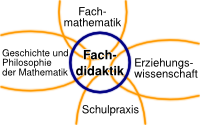03.11.2015 Prof. Dr. Uffe Thomas Jankvist: On the use of primary historical sources in the teaching and learning of mathematics – short and long term effects
| Einladung | zum Vortrag von Prof. Dr. Uffe Thomas Jankvist Danish School of Education, Aarhus University |
|---|---|
| Thema | On the use of primary historical sources in the teaching and learning of mathematics – short and long term effects |
| am | Dienstag, dem 03. November 2015, um 18:00 Uhr, in Raum ENC D-223 am Emmy-Noether-Campus der Universität Siegen. Es laden ein: die Dozenten der Didaktik der Mathematik |
| Abstract | The study of primary historical sources is often described as a rewarding pursuit worth the effort, despite being extremely demanding for both teachers and students. But which are the reasons for as well as different approaches to using primary historical sources in the teaching and learning of mathematics? In the present talk, these reasons and approaches from the literature shall be reviewed and illustrated through selected examples. In particular, focus shall be on recent empirical research findings from a Danish study and on the short and long term effects for students of having been exposed to readings of historical primary sources. The Danish study revolved around two specially designed, so-called, HAPh-modules, which are teaching modules on aspects of the History,Application, and Philosophy of mathematics. One of these modules concerned the early history of graph theory and its later application to shortest path algorithms, and the other concerned the history of Boolean algebra and its later application to electric circuit design. Upper secondary mathematics students, exposed to readings of primary source material as part of these modules in 2010-11, make up the case studies for addressing short term effects; while undergraduate mathematics students exposed to the same material in 2012, and interviewed in 2015, make up the case studies for long term effects. |


